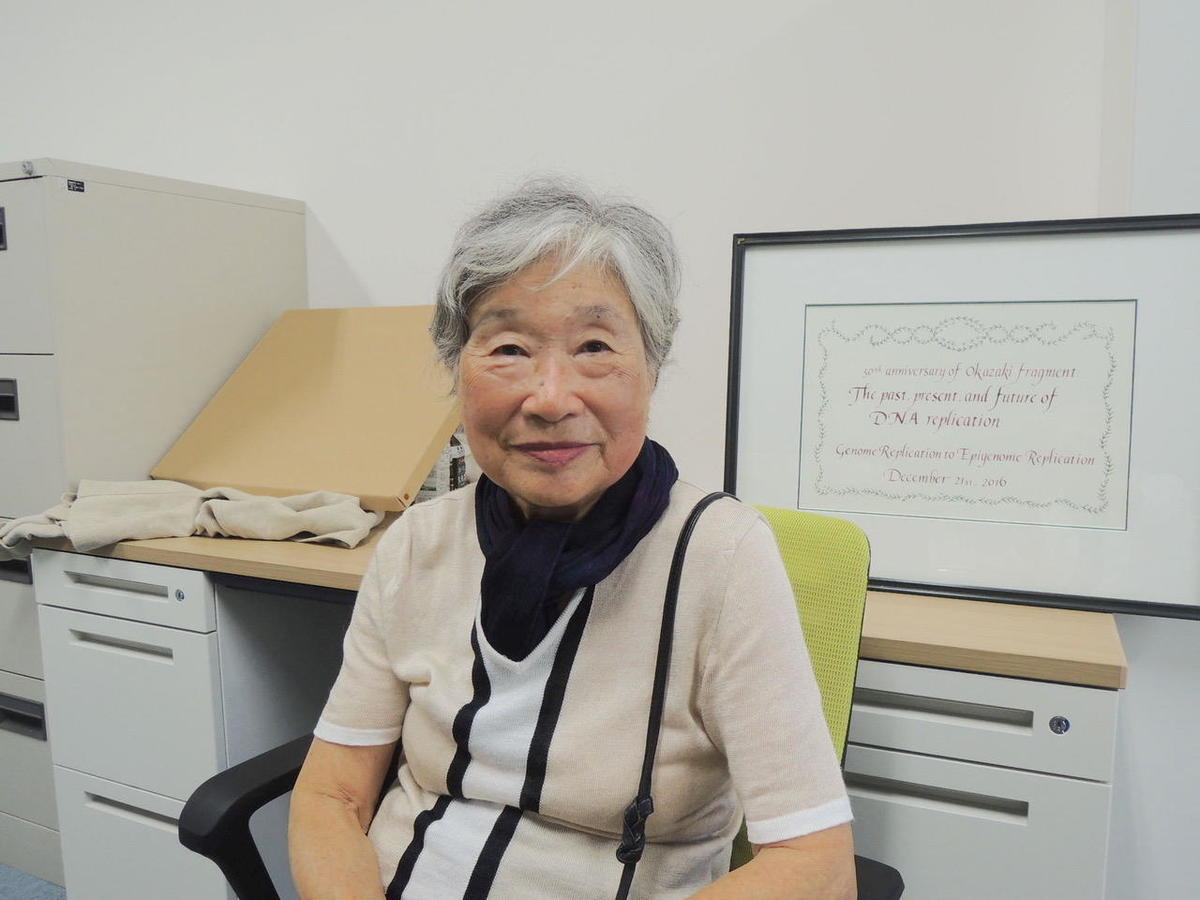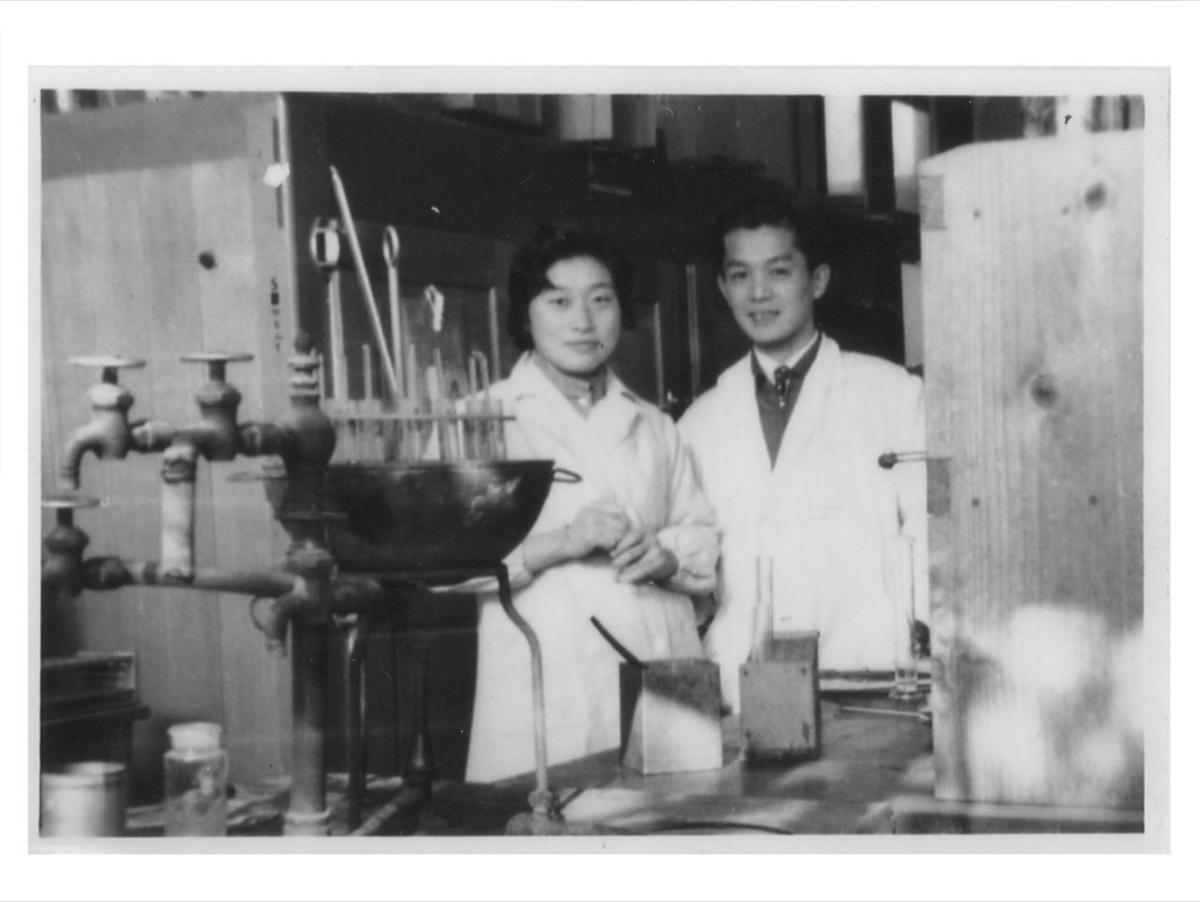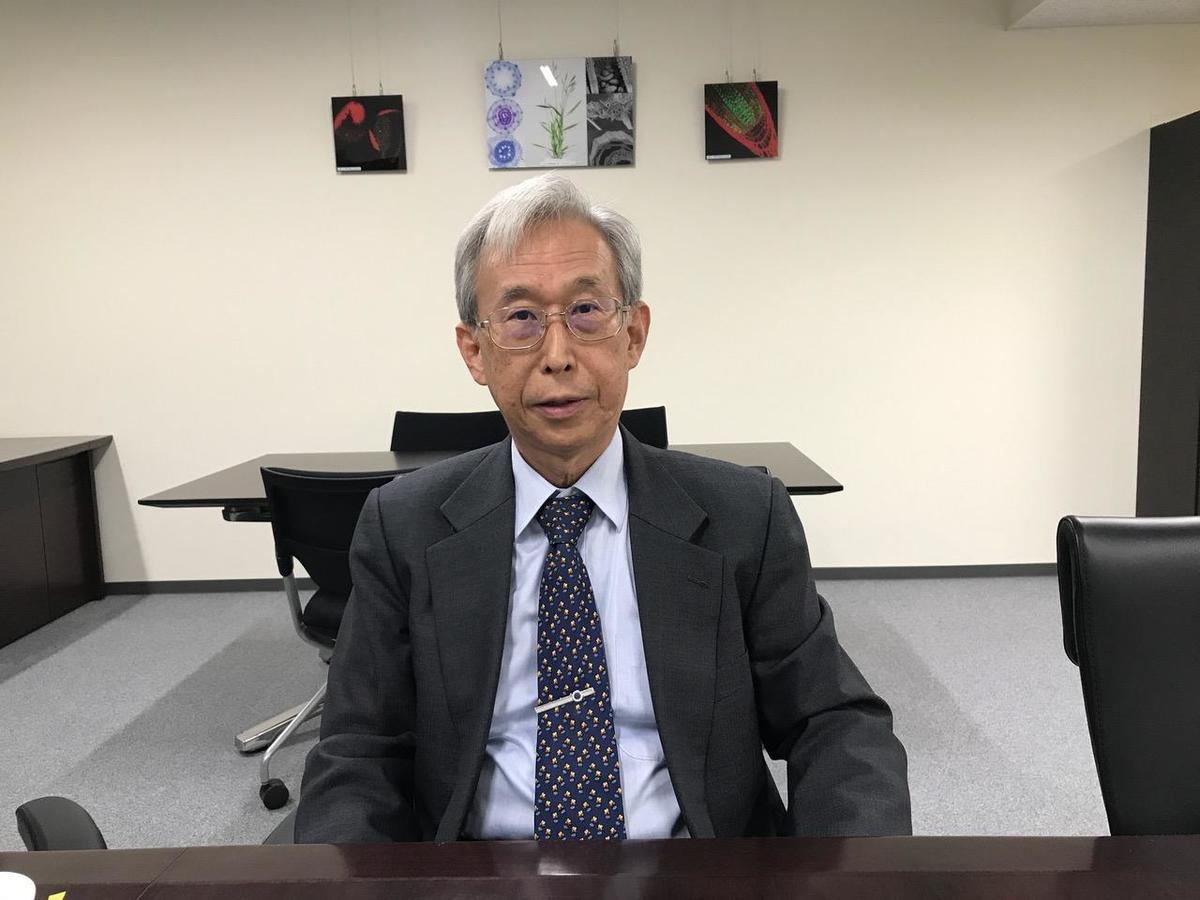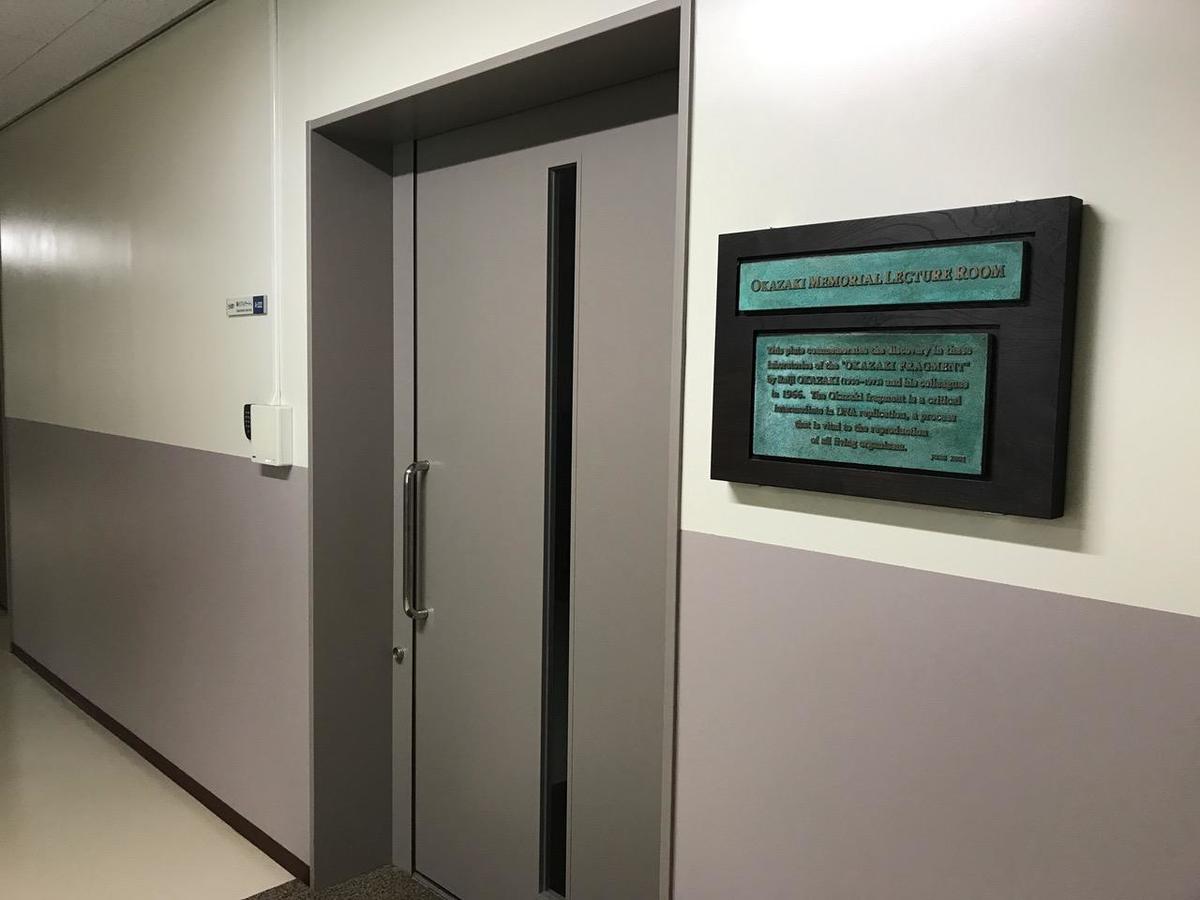October 18, 2017
Okazaki Fragments and the Nobel Prizes
The Nobel Committee has announced all the 2017 Nobel Prize winners, and this year, for the second year in a row, no women were found among the winners. In the press conference held after the announcement of the Prize in Economic Sciences, the Secretary General of the Royal Swedish Academy of Sciences, the body responsible for selecting the Nobel laureates in physics, chemistry and the economic sciences, responded that they would request more female scientists to be recommended for consideration. Since its inception in 1901, the Nobel Prizes have been awarded to 923 individuals and organizations, but only 48 of them are women. The number is even lower for the three science awards. The best of the three is the Nobel Prize in Physiology or Medicine, which boasts 12 women among its 214 winners, while only four out of 178 winners of the Chemistry Prize and two out of 207 winners of the Physics Prize are women. These figures include Marie Curie, who is counted twice because she won the Nobel Prizes in Physics and Chemistry - which means there are only 17 women in science. This represents a mere 3% of all Nobel laureates.
The American Chemical Society (ACS) has been discussing the low representation of women among Nobel laureates since last year's annual conference. In September, in the run-up to the Nobel Prize season, an article titled Women overlooked for Nobel honors appeared in Chemical & Engineering News (C&EN), a magazine published by the ACS. The article, based on the conference discussions, profiles the achievements of 13 female chemists. One of the names listed is Rosalind E. Franklin, who played a crucial role in the discovery of the double helical structure of DNA in 1953. She died of cancer in 1958 without ever being recommended for consideration. It was four years after her death in 1962 that Watson et. al. shared the Nobel Prize for this achievement. The article also notes that Lise Meitner is one of the top women to have been overlooked for a Nobel Prize; she collaborated with Otto Hahn, who went on to receive the Nobel Prize in Chemistry for discovering nuclear fission.
Another woman on the list is Isabella Karle, the wife of Nobelist Jerome Karle, who won the Chemistry Prize in 1985 for developing methods to determine the structure of crystals. When notified of the accolade, Jerome asked if his wife was jointly awarded the prize. But the names announced did not include Isabella's, and the prize was shared between Jerome and a different collaborator. Isabella said in a recent interview, the article quotes, that the couple "worked together, separately." The article points out that many scientific couples have a similar arrangement, complementing each other's efforts to achieve a major breakthrough.
Reading the article, I thought of Meidai's own renowned scientific couple, Tsuneko and Reiji Okazaki, who discovered Okazaki fragments - a name that should be familiar to many from high school biology textbooks. Reiji died from leukemia at 44 in 1975 brought on by radiation exposure he suffered in Hiroshima. Many say that he would have won the Nobel Prize if only he lived longer. If he did, I wonder, would he have said "how about my wife"?
 University Professor Tsuneko Okazaki, with a plaque commemorating the 50 anniversary of Okazaki fragments in December 2016
University Professor Tsuneko Okazaki, with a plaque commemorating the 50 anniversary of Okazaki fragments in December 2016
Tsuneko, now a University Processor of Meidai, gave the 2017 installment of the prestigious Nagoya University Lecture in September, titled "My journey through research: from DNA's discontinuous replication mechanism to the human artificial chromosome construction."
Okazaki fragments are short fragments of DNA molecules that are formed when the two strands of the double helix separate for replication. In the DNA double helix model presented in 1953 by James Watson and Francis Crick, the two DNA strands are complementary, made up of the base pairs of A-T and G-C. These strands are replicated when a new strand is formed using the existing strand as a template. The two strands unlock from each other like a fastener being opened, and a new molecule chain is formed along each of the existing strands. The perplexing problem for scientists back then was that these strands have directionality but that, even though the enzyme that produces a copy in one direction had been found, they could not find an enzyme responsible for the other direction. So how was the chain in the other direction replicated?
The Okazakis' hypothesis was that the existing enzyme was used to make very short chains, which were then linked up to produce a copy in the other direction. It was mostly Tsuneko's responsibility to prove this hypothesis through experimentation. When the team announced their findings at an academic conference in the US in 1968, they were met with wild applause and were feted as the solvers of the long-standing mystery. The short chains of DNA were later named Okazaki fragments in tribute. It was an epoch-making discovery that established fundamental mechanism of life at the dawn of molecular biology. Professor Emeritus Yasunori Machida, who introduced Tsuneko at Nagoya University Lecture 2017, praised her and called the work "a genuine Japanese intellectual property at the cutting-edge of science."
In addition to Watson and his colleagues, Arthur Kornberg, another scientist from early DNA research, received the Nobel Prize in Physiology or Medicine in 1959 for the discovery of the enzyme mentioned earlier. However, the research into the mechanism of DNA replication through which living organisms pass on genetic information seems to have been left out. Kunihiro Matsumoto, a senior research fellow and a former Dean of the Graduate School of Science, feels that it would be make sense for the Nobel Committee to award a prize covering semiconservative replication (through which the two strands of DNA separate and each produces a copy strand) and the mechanism of discontinuous replication using Okazaki fragments. These discoveries may have been made so far in the past that they seem like classic science now, but that does not necessarily mean it's too old; from a relatively close field, research into the mechanism of DNA repair, which was started in the 1970s, won the 2015 Nobel Prize in Chemistry. Perhaps its implications in diseases worked in its favor as the focus of the Nobel Prizes in recent years have been on applied research.
In the 1970-90s, basic molecular biology was very much in the spotlight, and the Nobel Prizes reflected this. Only if Reiji - with his name famous throughout the world - had been alive, some say.
It should not be ignored, however, that the discovery of Okazaki fragments was also the work of Tsuneko, who "had always did research together." After the initial presentation, there were persistent claims that the fragments might be occurring as a result of long chains breaking up. It was Tsuneko who, after Reiji's death, repeated complex experiments time and again to prove that the fragments were indeed produced as new short chains, thus completing the research. When her husband died, Tsuneko also lost her co-researcher, the boss of her lab and the father of her two children in one fell sweep, and was left to face the increasingly vocal critique alone. In her lecture, Tsuneko revealed how a letter from Arthur Kornberg, under whom she had studied, helped her through the hard times. In it he wrote: "continue your research. The world is waiting for the results from Nagoya."
 Reiji and Tsuneko Okazaki in their laboratory, before they went to the US to study. They always did research together
Reiji and Tsuneko Okazaki in their laboratory, before they went to the US to study. They always did research together
Reiji and Tsuneko married after they met at Meidai's biology department. In 1960, both won the Fulbright scholarship and studied at Stanford University under Professor Kornberg. He had just won the Nobel Prize in Physiology or Medicine then, and his laboratory was the world center for DNA replication research. It was only after they returned to Meidai in 1963 that the couple embarked on the research of fragments in their attempt to answer the big question of the time.
When Tsuneko became a research associate at the Okazaki Laboratory in 1965, there was strong opposition to the appointment; a woman working while bringing up children was unthinkable.
Reiji devoted all his time to research and was a "typical old-fashioned Japanese male." "He wouldn't even boil a kettle and would just drink water when alone," reminisces Tsuneko. She played the role of his sounding board, conducted experiments, and ran the lab. For Reiji, she was someone he could rely on entirely without any worry - and without any need to pay attention. The idea that women's rights needed to be protected probably never occurred to him. It is hard to deny that his attitude was probably part of the reason why Tsuneko's contribution to the research tended to be overlooked.
The fragments were initially reported in a degree thesis of a postgraduate student. Reiji, who supervised the student, was listed as a co-author, but Tsuneko was not - possibly because having too many names on a degree thesis might be disadvantageous. The thesis brought the student to worldwide attention.
After Okazaki fragments made Reiji an internationally renowned researcher, invitations flooded in for him to speak and give lectures. Tsuneko always had to stay at home. It was only after his death that she started receiving invitations.
While studying in the US, she was once warned by an acquaintance: "if you work in the same laboratory as your husband, you would end up having to do all the chores from running the lab to doing experiments - everyone would see you in a supporting role." She did indeed play that supporting role, and her husband no doubt saw her that way too, concedes Tsuneko.
When the Asahi Shimbun newspaper company presented the Asahi Prize to Reiji, Tsuneko was invited to the award ceremony not as his co-researcher but as his spouse.
"That sort of thing happened a lot, but it's trivial," says Tsuneko, her tone serene. "What's important in research is how you find a good problem to tackle, and solve it."
 Kazuo Shinozaki, Director of the RIKEN Center for Sustainable Resource Science. He was awarded the title of University Professor by Meidai in April 2017
Kazuo Shinozaki, Director of the RIKEN Center for Sustainable Resource Science. He was awarded the title of University Professor by Meidai in April 2017
Her philosophy is very much alive among the next generation of up-and-coming researchers.
Kazuo Shinozaki, Director of the RIKEN Center for Sustainable Resource Science who also spoke at Nagoya University Lecture 2017, graduated from the Okazaki Laboratory. He is a world leader in the research into plants' response to environmental stresses such as drought and extreme temperatures at the molecular level. In his lecture, he repeatedly mentioned the contribution of his wife Kazuko, who is now a professor at the University of Tokyo.
When I asked him about it after his lecture, he replied without hesitation: "because we did it together." He continued, "I am a sort of person who chases after new challenges, while she is a type who looks at details and ties up all the loose ends. We couldn't have done it without working together." Like the Karles, they "worked together, separately". He guesses that the Okazakis too probably complemented each other that way as they worked together. In the field of life sciences, apparently, many couples research jointly in this way.
When Shinozaki was selected for a Japanese Society of Plant Physiologists (JSPP) Award in 2009, he initially turned it down because the award was to be given only to him. It was only after the JSPP changed its rules to allow awards to be shared that he accepted the award with his wife.
Shinozaki was chosen for the Nagoya University Lecture partly because of the Order of Culture and Persons of Cultural Merit, a state honor which he was awarded in 2016, a year after Tsuneko received it in 2015. "I felt privileged to stand alongside my mentor to give this lecture - it was like a dream," enthuses Shinozaki. In Tsuneko's case, the only surprise was that it had taken so long for her to receive the honor. Again, it seems she was seen as someone in a supporting role.
 Laboratory with the plaque "Okazaki Memorial Lecture Room"
Laboratory with the plaque "Okazaki Memorial Lecture Room"
In 2015, younger colleagues at Meidai decided to commemorate the achievement of Tsuneko as well as Reiji and immortalize their legacy by creating a new international award: the Tsuneko & Reiji Okazaki Award. It is given to young researchers abroad who have made an important contribution to the field of life sciences and are regarded as tomorrow's world leaders. The award is run by Meidai's Institute of Transformative Bio-Molecules (ITbM), which was founded in 2013 and has attracted much attention since for a series of groundbreaking research through interdisciplinary collaboration between chemistry and life sciences. The judging panel headed by Shinozaki includes younger female professors from life sciences such as Ikue Mori and Azusa Kamikouchi.
The room that once housed the Okazakis' laboratory now bears a plaque that reads Okazaki Memorial Lecture Room. It must be a huge motivation booster for young students to discover that their campus is the birthplace of a world-class achievement.
This story places awards - especially prestigious awards such as the Nobel Prizes - in a new light. It is needless to say that not all first-class research receives awards. "How many excellent researchers are out there in the world, producing how many outstanding research outcomes? When I think about that, I can't help but feeling that it is by sheer good fortune that I have been awarded the Nobel Prize" - these are the words of Professor Emeritus Hideki Shirakawa of the University of Tsukuba, who received the Nobel Prize in Chemistry in 2000.
It is not uncommon for awards to come many years after the work was done - so much so that some say that the secret of winning a Nobel Prize is to live long. When Professor Takaaki Kajita of the University of Tokyo won the Physics Prize in 2015, his supervisor Professor Yoji Totsuka, also of the University of Tokyo, who should have shared the prize, had been dead for seven years after succumbing to cancer. This year's Nobel Prize in Physiology or Medicine went to the researchers of the body clock, but the two scientists who first discovered it in fruit flies back in early 1970s had died in 2007 and 2015 and thus missed out.
In the shadow of the bright lights of the Nobel Prizes, the achievements of the deceased tend to go unnoticed, but these early pioneers also deserve recognition. It may not be easy, of course. Some people have extreme views about this, insisting that any research should become non-eligible for the Nobel Prizes when its most prominent pioneer dies. That could mean that groundbreaking research may lose out despite their impact. It is a dilemma.
Another issue is the three-person limit. Controversies around the names on the winners' list are all too common. The Prizes have also been long criticized for overlooking young researchers and women who may have been the ones who did the actual work and got the result. However, this may be starting to change, albeit slowly. Women made up only around 2% of all Nobel laureates in the 20th century; in the 21st century, the number has increased slightly to around 6%. Will the plea of the Royal Swedish Academy of Sciences asking for more women to be recommended accelerate the change?
If Reiji Okazaki had been told that he had won the Nobel Prize, would he have asked "how about my wife"? When I asked this hypothetical but blunt question, Tsuneko smiled and said, "well, who knows?

 Subscribe to RSS
Subscribe to RSS